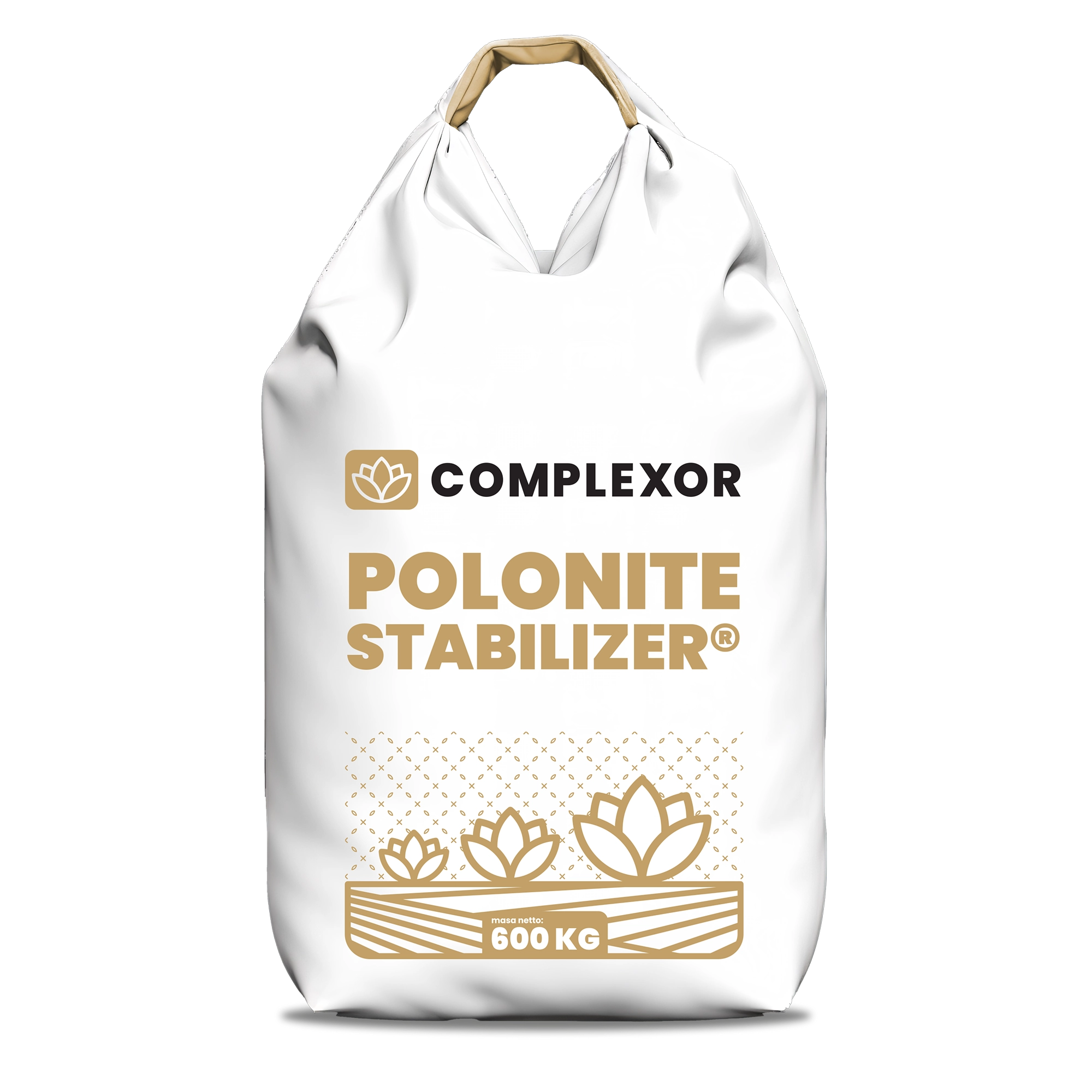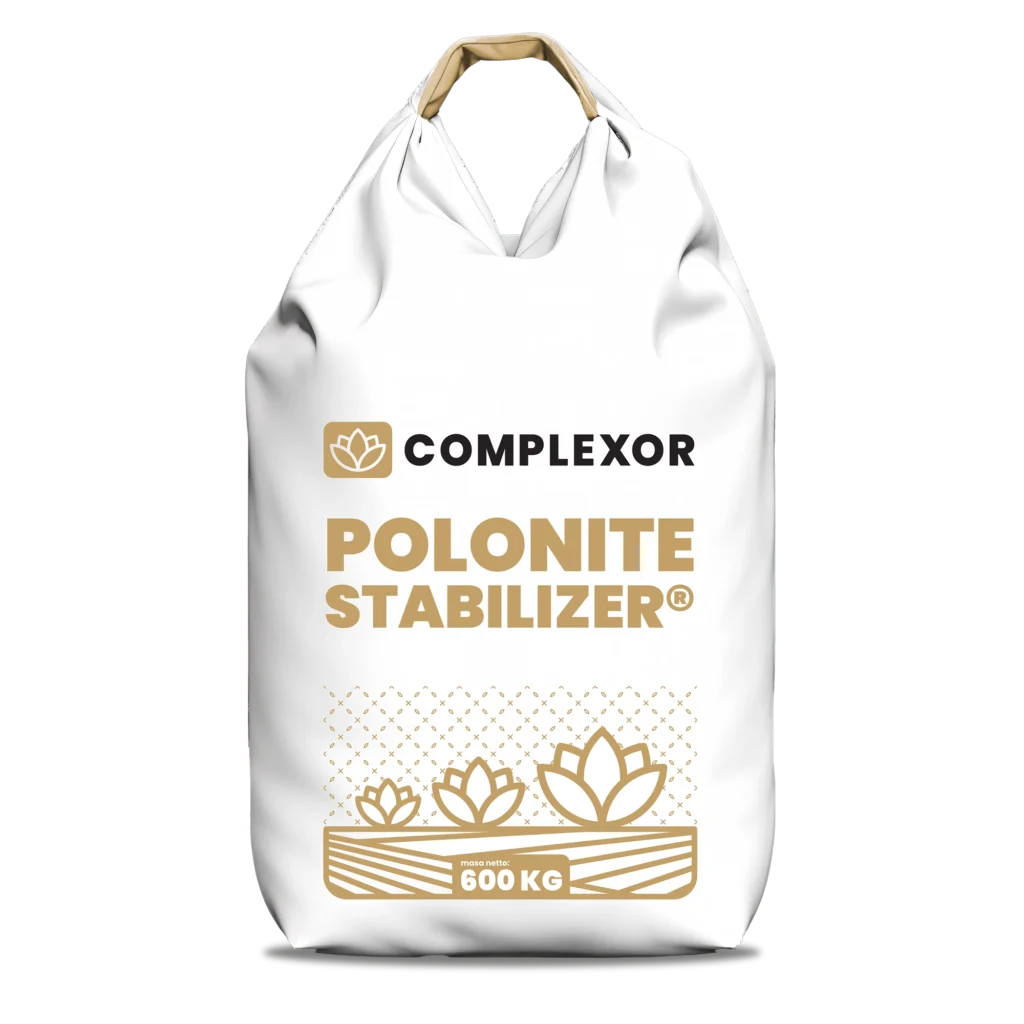Soil pH provides a wealth of information about the processes taking place in the soil, the effects of which influence cultivated plants. Soil acidity can be regulated through liming, which comprehensively improves fertility by positively affecting its physical, chemical, and biological properties.
Soil acidification is a serious problem affecting many farms, negatively impacting plant health, crop quality, and overall productivity. Understanding the causes and effects of soil acidification is crucial for effective land management and improving soil quality. Below we present the most important information on this issue.
Causes of Soil Acidification
1. Natural soil processes. Soils may acidify naturally as a result of mineral weathering and the decomposition of organic matter. These processes release organic and inorganic acids, which lower soil pH.
2. Acid rain. Precipitation containing acids (sulfuric and nitric), formed as a result of industrial pollution, can significantly contribute to soil acidification. Acid rain leaches alkaline components from the soil, lowering its pH.
3. Excessive use of nitrogen fertilizers. Nitrogen fertilizers, such as ammonium sulfate or urea, can lead to acidification when applied excessively. This occurs when ammonium is converted into nitrate, releasing hydrogen, which lowers soil pH.
4. Leaching of alkaline nutrients. Heavy rainfall and excessive irrigation can leach calcium, magnesium, and potassium from the soil. These elements act as natural buffers neutralizing acids. Their absence contributes to lower soil pH.
5. Decomposition of organic matter. The breakdown of plant residues and manure also generates organic acids that contribute to soil acidification, especially under anaerobic conditions.
Effects of Soil Acidification
1. Reduced availability of nutrients. Acidic soil restricts the availability of important nutrients such as nitrogen, phosphorus, potassium, calcium, magnesium, and molybdenum. Plants grown in acidic soils often suffer from these deficiencies, which affects their growth and yields.
2. Toxic heavy metals. Low soil pH mobilizes toxic aluminum, which at high concentrations inhibits root growth, causes damage, and weakens the entire plant.
3. Soil structure disturbances. Acidification negatively affects soil structure, reducing its capacity to retain water and air, and causing crust formation on the surface, which hinders seedling emergence.
4. Impact on soil microorganisms. An acidic environment is unfavorable to many beneficial microorganisms, such as nitrogen-fixing bacteria. Reduced microbial activity decreases soil fertility and degrades soil quality.
5. Yield reduction. All the above factors contribute to overall yield decline. Plants in acidic soils are weaker, more susceptible to diseases, and less productive, resulting in smaller harvests and lower farmer income.
To effectively manage soil and improve its quality, it is essential to regularly monitor soil pH and apply appropriate treatments, such as liming. Maintaining the proper pH allows for optimal use of soil resources, resulting in healthier crops and higher yields.
The market offers a wide range of calcium and calcium-magnesium fertilizers, differing in chemical composition and mode of action. The most common forms are oxide fertilizers, such as quicklime, and carbonate fertilizers, including limestone, dolomite, magnesite, and some industrial by-products containing calcium and magnesium carbonates (CaCO₃ and MgCO₃). Oxide fertilizers act quickly but require more water for the chemical reaction, making them best suited for heavy, compact soils. They improve not only soil pH but also its structure. For light soils with lower water capacity, carbonate fertilizers are safer, as they do not cause drying and act gradually and evenly.
Among calcium-magnesium fertilizers, dolomites are particularly valuable – natural carbonate fertilizers that, besides their deacidifying properties, also supply magnesium. Magnesium is often deficient, especially in light soils, so when choosing the right lime, soil analysis results should be considered, taking into account not just pH but also magnesium content. When soil tests show very low pH and the recommended CaO dose is high, it should not be applied all at once. A better solution is to divide the dose over two or three years, helping maintain soil biological balance and protecting beneficial microorganisms.
The optimal time for applying lime fertilizers is after harvest or just before sowing crops particularly sensitive to soil acidity. Liming may also be carried out in early spring, but in that case, only carbonate forms should be used. On grasslands, such as meadows and pastures, liming aims to maintain the proper pH – for mineral soils between 5.5 and 6.5, and for organic soils between 4.5 and 5.0. Carbonate lime is most often used, at doses of 1.0 to 1.5 tons CaO per hectare. This treatment is carried out in late autumn or early spring, before vegetation begins.
It is very important to avoid combining liming with the simultaneous application of natural fertilizers such as manure or slurry, as well as mineral fertilizers containing ammonium nitrogen or phosphates. Applying them together causes nutrient losses, lowering fertilization efficiency. To prevent this, an interval of at least 4–6 weeks should be maintained between liming and other fertilization treatments.
The effectiveness of well-performed liming lasts about five years; however, the highest yield gains are usually observed in the second, third, and fourth years after application. Regular monitoring of soil pH and scheduling liming based on current analysis results are key to maintaining fertility and ensuring high crop production efficiency.
Which Type of Lime for Which Soil?
Selecting the right lime for soil is a key factor influencing plant health and yields. Liming raises pH, essential since most crops prefer slightly acidic to neutral soils. However, different soil types require different lime types to achieve optimal results. Below are guidelines for choosing the best lime for your soil.
1. Light soils (sandy and podzolic)
Sandy soils are characterized by low nutrient content and poor water retention. In such conditions, carbonate lime (e.g., dolomitic lime) is recommended, as it works more slowly but steadily raises soil pH. Carbonate lime also improves soil structure, strengthening water and nutrient retention.
2. Medium soils (loamy and clayey)
Loamy and clay soils are more fertile but may tend to acidify. The best choice here is magnesium lime (containing dolomite or magnesite). This type of lime not only increases pH but also supplies magnesium, which is essential for plant growth. This is especially important for magnesium-demanding crops such as cereals and sugar beets.
3. Heavy soils (clay-loam)
Heavy soils require more intensive treatment to improve their structure and permeability. In this case, oxide lime (quicklime) is advisable. It acts quickly and raises soil pH intensively, which is crucial on strongly acidified soils. Due to its fast action, oxide lime should be applied when there is no risk of harming young plants, such as after harvest.
4. Acidic soils
For strongly acidified soils, regardless of texture, it is worth using chalk lime or carbonate lime, which is safe for plants and ensures gradual pH improvement. Chalk lime also has a high calcium content, which benefits most crops.
The choice of lime depends on soil conditions. Regular soil pH tests and composition analysis allow optimal lime selection, improving soil quality and crop yields. Correct liming is an investment in long-term farm productivity.
What to Consider When Choosing Lime
How to Determine the % of CaO in Lime?
The application dose of a given calcium or calcium-magnesium fertilizer is based on converting its form into oxide form (CaO), according to the following conversion factors:
| Fertilizer | CaO Equivalent |
|---|---|
| Calcium carbonate (CaCO₃) | 0.56 |
| Calcium oxide (CaO) | 1.00 |
| Magnesium carbonate (MgCO₃) | 0.66 |
| Magnesium oxide (MgO) | 1.39 |
| Fertilizer | CaO Equivalent |
|---|---|
| Calcium carbonate (CaCO₃) | 0.56 |
| Calcium oxide (CaO) | 1.00 |
| Magnesium carbonate (MgCO₃) | 0.66 |
| Magnesium oxide (MgO) | 1.39 |
Example: 98% CaCO₃ x 0.56 = 54.88 CaO
Nutritional Calcium – Role and Functions in Plants
Calcium is one of the most important macronutrients essential for the proper growth and development of plants. Its presence in the soil and availability to plants directly affects crop health, resistance to diseases, and overall productivity. Below we briefly present the role of calcium in plants and its functions, making it an irreplaceable nutrient.
The role of calcium in plants
1. Cell wall structure. Calcium plays a key role in building and stabilizing cell walls. It is the main component of pectins, fundamental elements of the cell wall. Thanks to calcium, cell walls are strong and elastic, providing plants with structure and mechanical strength.
2. Effect on cell division. Calcium participates in cell division, influencing the formation and function of the mitotic spindle. It is essential for the proper course of mitosis, directly affecting plant growth and development.
3. Transport and nutrient uptake. Calcium is crucial for the function of cell membranes. It facilitates nutrient transport and regulates osmotic processes, vital for maintaining ionic balance in plant cells.
4. Enzymatic regulation. Calcium activates many enzymes responsible for key metabolic processes in plants. Without calcium, these enzymes cannot function effectively, which affects a plant’s overall condition.
Functions of calcium in plants
1. Strengthening resistance
Plants with adequate calcium levels are more resistant to diseases and abiotic stresses, such as drought or salinity. Calcium helps form protective barriers and strengthens plants’ defense responses.
2. Improving the quality of fruits and vegetables
Calcium is an important element influencing crop quality. Its presence in fruits and vegetables prevents problems such as blossom-end rot in tomatoes or bitter pit in apples, which directly affects their market value.
3. Supporting root growth
Plant roots develop better in calcium-rich soils. Calcium supports the formation of new roots and root system growth, improving the ability to absorb water and nutrients from the soil.
Calcium is an essential nutrient for plants, influencing their structure, growth, health, and yield quality. Regular monitoring of soil calcium levels and proper supplementation are necessary to achieve high yields and healthy crops. Ensuring the right level of calcium allows farmers to provide plants with optimal growing conditions, bringing benefits in both the quantity and quality of agricultural production.
Urszula Zimnoch
PhD Eng. Agricultural Sciences





